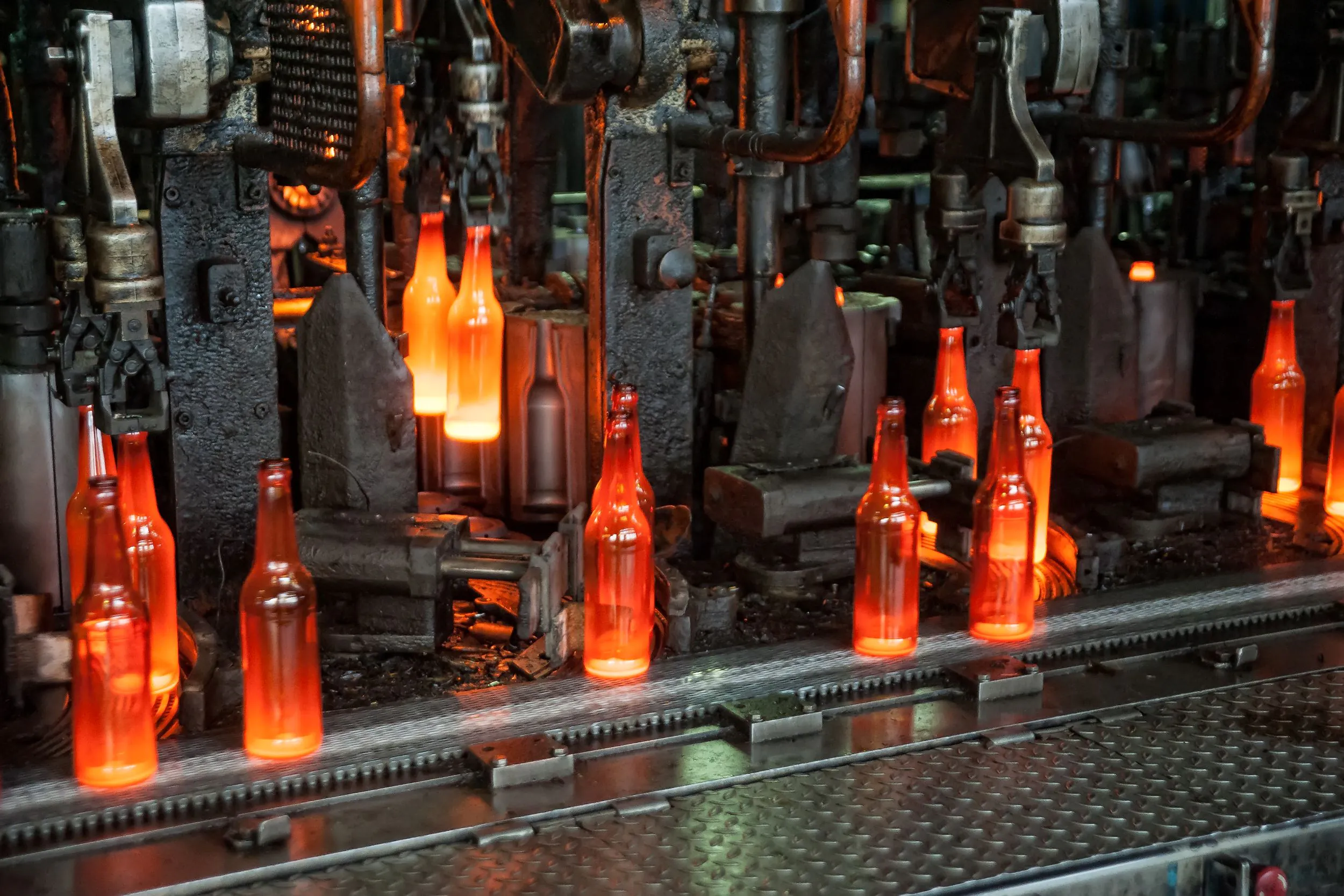The global glass industry is one that many other sectors rely on, and demand for glass products is increasing steadily. However, this growing demand combined with material shortages and other supply chain challenges mean that the past few years have brought a threat of glass shortages in various industries. And because glass relies heavily on sand as a key component of its production, there are long-term concerns around supply as well.
Glass Industry Overview
Valued at over $100 billion in 2021, the glass industry is expected to continue growing over the next several years as construction spending rises and demand for recyclable packaging becomes stronger by the day. Glass containers make up nearly half of all glass products, with the packaging sector being the largest consumer of glass. Flat glass is the second-most common product, due largely to its use in residential and commercial construction. While fiberglass makes up a smaller segment of the market, demand is growing due to its value in the telecommunications sector as 5G networks continue to expand.
Asia-Pacific is the biggest region for the global glass industry, accounting for 40% of the market in 2021. Demand from end-use industries is expected to continue to rise over the coming years, boosting the need for glass production. North America is also a significant market for glass, with demand from the automotive industry along with packaging and construction. The popularity of solar panels is also on the rise, helping to power demand for glass.
The Glass Bottle Shortage
During the pandemic, supply chain disruptions meant that raw materials for glass became harder to obtain, making it difficult for some glass suppliers to meet demand, particularly in countries like the UK that rely on imports to meet demand for glass. The limited supply and higher prices posed a challenge for both buyers and sellers of glass, but weren’t as dire an issue as some had predicted. However, the war in Ukraine has further complicated matters.
Glass requires an intense amount of energy to create, and the conflict with Russia has meant a more restricted fuel supply and rising fuel prices. Combined with the earlier supply chain disruptions, this has made glass shortages a bigger threat.
In the UK, for example, industry organization British Glass dismissed concerns around impending glass bottle shortages in May 2022, commenting that national production at least was not at risk. At the time, high demand for beer bottles across Europe had the potential to produce a knock-on effect farther down the road, and energy prices had some impact on the price of glass, but the organization argued that these issues were not large enough to create shortages in the country.
However, a year later, circumstances changed and British Glass was warning that the UK glass packaging market was “reaching crisis point.” Along with the previous challenges, the UK has been exporting used glass to be recycled rather than doing it within the country, leading to material shortages and limiting the ability to build a circular economy. It is currently more profitable for UK companies to export used glass for recycling, leaving them with few incentives to do it at home. Lack of recycling is an issue in some other countries as well, such as the US, where only 31% of glass bottles are recycled. Some winemakers in the country are feeling the pressure, with a decline in imports and delays at US ports. Many are looking at alternative options, such as lighter-weight glass or other formats altogether, including cans, bags, and boxes.
In Portugal and France, wine producers are asking for government intervention to help with the glass bottle shortage as their bottle options become more limited and it becomes more difficult to find enough bottles for their newest vintages. Bottles that are still available are becoming increasingly expensive, and winemakers are often have to settle for different colours, sizes, and styles of bottles than those they typically use. These challenges are also tempting companies to return to the practice of reusing bottles, which had largely been abandoned in France due to the country’s efficient recycling program.
Unsustainable Resource Use
Sand is an essential ingredient in several industries. It’s the second-most used resource in the world (after water), and the glass manufacturing industry is among the largest consumers of it. Sand is also a key ingredient in concrete, making it essential to a construction industry that continues to see high demand around the world. The extraction of sand is largely unregulated, and it’s currently being consumed faster than it’s being replenished. This means that on top of the factors behind the current glass shortages, the glass industry may face bigger challenges in the long term. Sand extraction can also be harmful to biodiversity and to the surrounding environment when not done with care.
All of this points towards the need to better recycle and reuse glass products in order to combat this issue. Glass can be recycled indefinitely without deteriorating in quality or becoming unsafe for food and beverage storage, making it quite environmentally friendly if treated properly. Consumers also tend to perceive glass products — or products packaged in glass — as being higher quality than plastic, adding value to the item. In addition, waste glass can potentially be used in construction as an alternative to natural sand, reducing the need to extract more sand from the environment.
Glass is an important packaging material with numerous applications across industries, from food and beverages to pharmaceuticals to cosmetics. At a time when there is increasing pressure towards sustainability from both consumer demands and government regulations, the glass industry is more important than ever when it comes to packaging. As companies move to reduce or eliminate plastic from their packaging, glass is one alternative many are choosing to adopt, increasing demand for products that are already facing shortfalls. Glass is currently the second-most used packaging material in Europe and continuing to grow in popularity.
A strong glass recycling program can drastically reduce the amount of new glass packaging products needed on the market, replacing them with reused items and those made of recycled glass. With regards to fuel prices driving up product costs, investigating alternative fuel sources could reduce reliance on fossil fuels and help meet environmental standards that are gradually becoming stricter. While neither of these are fast solutions, both can make the global glass industry more resilient, sustainable, and prepared to take on increased demand from a broad range of sectors.



